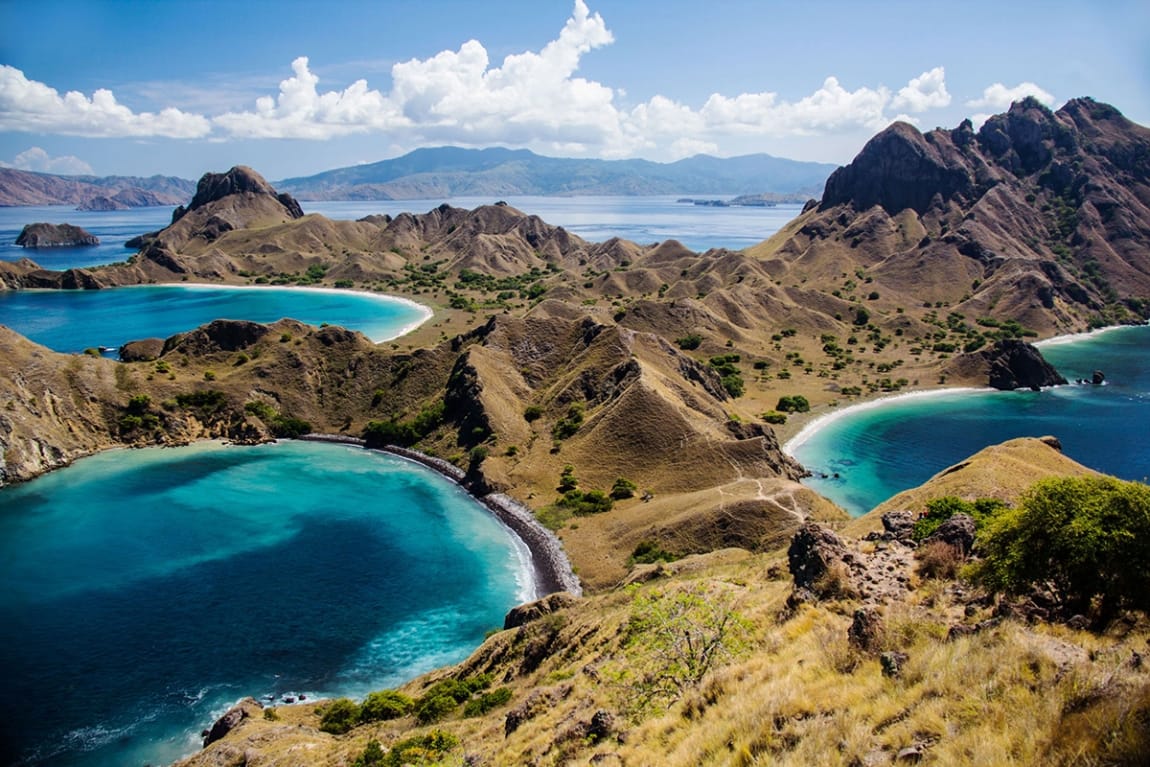Cost To Visit Bali In 2026: Visitors Travel Budget Guide
Discover what it cost to vacation in Bali, and how much you need to budget daily to plan your adventure in paradise.

Planning a trip to Bali? This guide breaks down exactly how much it will cost so that you can plan your budget on flights, hotels, food, and activities.
Is Bali Expensive to Visit?
Bali is often seen as one of the most affordable tropical destinations in Southeast Asia—especially when compared to places like the United States or Europe. While you’ll find plenty of luxury resorts and upscale dining options, most travelers are surprised at how budget-friendly Bali can be. Hotels, meals, and activities usually cost far less than in Western countries, though prices do vary depending on the season and whether you’re traveling on a budget, mid-range, or luxury style.
Seasonal Cost of Visiting Bali
The time of year you travel to Bali has a big impact on how much your trip will cost. Flights, hotels, and even activity prices fluctuate with the seasons—knowing when to go can save you hundreds of dollars.
When Is the Most Expensive Time to Visit Bali?
The most expensive months to visit Bali fall in the peak season (July–August and December–early January). These periods line up with summer holidays in Australia and Europe, as well as Christmas and New Year celebrations, driving up both flight and accommodation prices. Popular festivals, like Nyepi in March, also attract large crowds and can cause a spike in hotel rates.
When Is the Cheapest Time to Visit Bali?
The cheapest time to visit Bali is during the off-season (January–March and October–November). This period coincides with the rainy season, meaning fewer tourists and noticeably lower prices on flights, hotels, and tours. While showers are common, they typically don’t last all day—making it a great value for budget travelers.
Peak Season (July–August, December–Early January)
- Highest prices for flights and hotels
- Attractions and beaches most crowded
- Festive atmosphere with global visitors
Shoulder Season (April–June, September–October)
- Lower costs compared to peak season
- Warm, sunny weather ideal for sightseeing
- Fewer crowds at Bali’s top attractions
Off-Season (January–March, October–November)
- Cheapest time for flights, accommodations, and activities
- Rainy season, but showers are usually brief
- Quieter island experience with fewer tourists
Most Expensive Areas of Bali to Stay
- Seminyak: Known for its high-end beach clubs, luxury resorts, and fine dining restaurants.
- Nusa Dua: A gated area with luxury resorts, private beaches, and golf courses.
- Uluwatu: Famous for its clifftop resorts and stunning ocean views.
Affordable Areas of Bali to Stay
- Canggu: Popular among digital nomads and surfers, offering a mix of budget and mid-range accommodations.
- Sanur: A quieter, more relaxed area with a good range of mid-range hotels and resorts.
Cheapest Areas of Bali to Stay
- Ubud: Known for its rice terraces, temples, and arts scene. While Ubud has luxury options, it also offers many affordable guesthouses.
- Kuta: The original tourist hub of Bali, offering plenty of budget accommodations and a lively atmosphere.
Average Accommodation Cost
| Type | Peak Season | Shoulder Season | Off-Season |
|---|---|---|---|
| Budget | $30 - $50 | $20 - $40 | $15 - $30 |
| Moderate | $60 - $120 | $50 - $100 | $40 - $80 |
| Luxury | $200 - $400+ | $150 - $300 | $100 - $250 |
Food Costs in Bali
Eating in Bali can be as cheap—or as high-end—as you want it to be. From street food stalls to fine-dining restaurants, there’s something for every budget.
Local Eateries and Warungs
For the most authentic and affordable experience, head to Bali’s warungs (family-run eateries). Here you’ll find classics like Nasi Goreng (fried rice), Mie Goreng (fried noodles), and Satay skewers.
- Average cost: IDR 15,000–50,000 ($1–$3.50 USD) per meal
- Loved by locals and budget travelers alike
- Filling meals at a fraction of Western prices
Mid-Range Restaurants
If you want a mix of Indonesian and international dishes in a more comfortable setting, mid-range restaurants are a great choice. Many are located near beaches or rice terraces, offering great views while you eat.
- Average cost: IDR 50,000–150,000 ($3.50–$10 USD) per meal
- Menu options often include both local dishes and Western favorites
- Perfect for travelers wanting variety without overspending
High-End Dining
Bali has a growing fine-dining scene, especially in Seminyak, Ubud, and Nusa Dua. Expect gourmet fusion dishes, organic ingredients, and world-class presentation.
- Average cost: IDR 200,000–600,000 ($13–$40 USD) per person
- Popular in upscale areas with trendy ambiance
- A splurge that combines cuisine with atmosphere
Local Markets
Markets like Pasar Badung in Denpasar or Ubud Market are not only cheap but also part of the cultural experience. Fresh fruit, snacks, and local delicacies make them a great spot to grab food for a picnic.
- Average cost: just a few dollars for snacks or fresh produce
- A chance to eat like a local and sample unique flavors
- Prices are generally stable year-round
Transportation Costs in Bali
Getting around Bali comes with a wide range of options—everything from budget scooters to private drivers.
Taxis and Ride-Hailing
Taxis are common in tourist hubs like Kuta, Seminyak, and Ubud. Ride-hailing apps such as Grab and Gojek are cheaper and widely available.
- Taxi base fare: IDR 7,000–10,000 ($0.50–$0.70 USD)
- Per km: IDR 5,000–7,000 ($0.35–$0.50 USD)
- Short trips: around IDR 30,000–50,000 ($2–$3.50 USD)
- Grab/Gojek rides: IDR 10,000–20,000 ($0.70–$1.50 USD)
Scooter Rentals
Renting a scooter is the cheapest and most flexible way to explore Bali, though traffic can be chaotic.
- Rental cost: IDR 50,000–70,000 per day ($3.50–$5 USD)
- Fuel: IDR 30,000–50,000 ($2–$3.50 USD) for a full tank
- Best for experienced riders with an international driving permit
- Always wear a helmet and consider travel insurance for scooter accidents
Car Rentals
For families or groups, a car provides more comfort.
- Rental cost: IDR 200,000–500,000 per day ($13–$33 USD)
- Many agencies also offer cars with drivers
- Self-driving requires an international driving permit and patience with traffic
Private Drivers
A private driver is one of the most convenient ways to explore the island—ideal for full-day trips.
- Cost: IDR 500,000–800,000 per day ($33–$53 USD), including fuel
- Great for visiting temples, waterfalls, and remote attractions
- Adds local insight and eliminates parking hassles
Public Transportation
Public options are limited and less reliable, but they’re cheap.
- Bemos (shared vans) and buses operate between towns
- Fares: IDR 5,000–15,000 ($0.35–$1 USD)
- Best suited for budget travelers wanting a local experience
Entry Fees and Attractions in Bali
Bali is filled with temples, natural wonders, and cultural attractions—most with affordable entry fees. Here’s what to expect when planning your sightseeing budget.
Temples in Bali
- Uluwatu Temple – Famous for cliffside sunsets and Kecak dance shows. Entry fee: IDR 30,000 ($2 USD) adults, IDR 20,000 ($1.30 USD) children. Kecak dance performance: IDR 100,000 ($6.50 USD).
- Tanah Lot Temple – Bali’s most iconic seaside temple. Entry fee: IDR 60,000 ($4 USD) adults, IDR 30,000 ($2 USD) children.
- Besakih Temple (Mother Temple) – Largest and holiest temple in Bali. Entry fee: IDR 60,000 ($4 USD) per person, includes sarong rental.
Natural Attractions
- Tegallalang Rice Terraces – Stunning terraced fields near Ubud. Entry fee: IDR 15,000 ($1 USD) + optional donation of IDR 10,000–15,000 ($0.70–$1 USD).
- Sekumpul Waterfall – Northern Bali’s most beautiful waterfall. Entry fee: IDR 20,000 ($1.30 USD); optional guide: IDR 125,000 ($8 USD).
- Mount Batur – Famous for sunrise treks. Entrance: IDR 100,000 ($6.50 USD). Guided tours with transport and breakfast: IDR 400,000–700,000 ($26–$46 USD).
Cultural Experiences
- Balinese Dance Performances – Barong dance in Ubud and others. Tickets: IDR 100,000–150,000 ($6.50–$10 USD).
- Ubud Art Museums –
- Blanco Renaissance Museum: IDR 100,000 ($6.50 USD).
- Agung Rai Museum of Art (ARMA): IDR 80,000 ($5 USD) + complimentary drink.
Adventure Activities
- White Water Rafting – Ayung & Telaga Waja rivers. Tours: IDR 300,000–600,000 ($20–$40 USD).
- Snorkeling & Diving – Snorkeling from IDR 200,000 ($13 USD); diving from IDR 600,000–1,200,000 ($40–$80 USD).
- Bali Swing – Famous jungle swing attraction. Packages: IDR 150,000–300,000 ($10–$20 USD).
Cost of Day Trips From Bali
Bali also serves as a gateway to nearby islands and destinations:
- Nusa Penida – Rugged cliffs, snorkeling at Crystal Bay. Fast boat: $15–$30 round trip. Travel time: 45 minutes.
- Gili Islands – White-sand beaches, diving, night markets. Fast boat: $40–$60 round trip. Travel time: 2–3 hours.
- Mount Batur – Sunrise trekking hotspot. Guided tours with transport: $30–$50 USD.
Daily Budget Needed for Bali
Your daily spending depends on whether you’re backpacking, traveling mid-range, or going luxury.
Budget Traveler – $25–$50 per day
- Accommodation: $8–$15 (hostel dorm/guesthouse)
- Food: $5–$10 (warungs & street food)
- Transportation: $3–$8 (scooter rental/local bemos)
- Activities: $5–$15 (temples, rice terraces, beaches)
Tip: Stay in homestays—many include breakfast.
Mid-Range Traveler – $50–$150 per day
- Accommodation: $30–$70 (private villa or hotel with pool)
- Food: $15–$30 (cafés, mid-range restaurants, some street food)
- Transportation: $10–$20 (scooter or half-day driver hire)
- Activities: $10–$30 (yoga classes, tours, entrance fees)
Tip: Beach clubs often include food & pool access in the minimum spend.
Luxury Traveler – $150+ per day
- Accommodation: $100–$500+ (resorts, luxury villas)
- Food: $40–$100 (fine dining, private chefs)
- Transportation: $30–$50 (private driver all day)
- Activities: $50–$200 (spa treatments, private excursions, diving trips)
Tip: Splurge on wellness retreats or bespoke tours for a high-end experience.
Extras to Consider
- Shopping – Handmade crafts to designer goods: $10–$50+
- Alcohol – Beer: $2–$4; cocktails: $5–$15
- Unexpected Costs – Medical care, souvenirs, or spontaneous trips
Weekly Cost to Visit Bali
Your weekly budget in Bali depends on the season and your travel style. Here’s a breakdown of what you can expect to spend:
| Traveler Type | Low Season (Jan–Apr, Nov–Dec) | High Season (May–Oct) |
|---|---|---|
| Budget Traveler | $250 – $350 | $300 – $450 |
| Moderate Traveler | $600 – $900 | $750 – $1,200 |
| Luxury Traveler | $1,500 – $2,500 | $2,000 – $3,500 |
👉 Low season offers the best value, especially for budget and moderate travelers, while high season drives prices up across accommodations, activities, and flights.
What Does Airfare to Bali Cost?
Flight prices to Bali vary significantly by departure region and season.
Low Season (Jan–Apr, Nov–Dec)
- From Southeast Asia: $100 – $300
- From Australia: $200 – $400
- From Europe: $600 – $1,000
- From United States: $700 – $1,200
High Season (May–Oct)
- From Southeast Asia: $150 – $400
- From Australia: $300 – $600
- From Europe: $800 – $1,500
- From United States: $900 – $1,500
💡 Flights from Southeast Asia and Australia are often short and affordable, it's the flight segement from the U.S. that makes up the biggest share of your flight cost. Sign up for our airfare alerts and get notified of an amazing flight deal when we find one.
Discover More Of Indonesia
Pros:
- Lower prices for flights and accommodations
- Fewer tourists at popular attractions
- Rainy weather can limit outdoor activities
- More humidity and wet conditions
Breakdown:
- Accommodation: $15–$50 per night
- Food: $10–$30 per day
- Activities: $100–$200 for tours and entrance fees
Ubud Pros:
- Cultural attractions and scenic landscapes
- Budget-friendly guesthouses and homestays
- Lively nightlife and shopping
- Close to the airport and affordable stays
- Scooters are cheap for short distances
- Private drivers are more convenient for day trips
- Public transport is limited and best for very budget-conscious travelers
- Travel in the off-season (Jan–Mar, Oct–Nov)
- Eat at local warungs for cheap authentic meals
- Use rideshare apps instead of taxis
- Bargain at markets
- Stay in guesthouses or homestays instead of resorts






